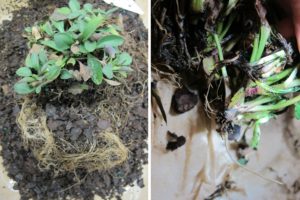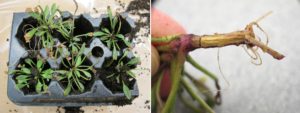Dickeya Dianthicola in the Production of Herbaceous Ornamentals
go.ncsu.edu/readext?457210
en Español / em Português
El inglés es el idioma de control de esta página. En la medida en que haya algún conflicto entre la traducción al inglés y la traducción, el inglés prevalece.
Al hacer clic en el enlace de traducción se activa un servicio de traducción gratuito para convertir la página al español. Al igual que con cualquier traducción por Internet, la conversión no es sensible al contexto y puede que no traduzca el texto en su significado original. NC State Extension no garantiza la exactitud del texto traducido. Por favor, tenga en cuenta que algunas aplicaciones y/o servicios pueden no funcionar como se espera cuando se traducen.
Português
Inglês é o idioma de controle desta página. Na medida que haja algum conflito entre o texto original em Inglês e a tradução, o Inglês prevalece.
Ao clicar no link de tradução, um serviço gratuito de tradução será ativado para converter a página para o Português. Como em qualquer tradução pela internet, a conversão não é sensivel ao contexto e pode não ocorrer a tradução para o significado orginal. O serviço de Extensão da Carolina do Norte (NC State Extension) não garante a exatidão do texto traduzido. Por favor, observe que algumas funções ou serviços podem não funcionar como esperado após a tradução.
English
English is the controlling language of this page. To the extent there is any conflict between the English text and the translation, English controls.
Clicking on the translation link activates a free translation service to convert the page to Spanish. As with any Internet translation, the conversion is not context-sensitive and may not translate the text to its original meaning. NC State Extension does not guarantee the accuracy of the translated text. Please note that some applications and/or services may not function as expected when translated.
Collapse ▲
Dickeya-infected Coreopsis showing purpling and death of lower leaves (left) and basal stem rot (right). Photos: NCSU PDIC
During March 2017 the NCSU Plant Disease and Insect Clinic confirmed the presence of the bacterium Dickeya dianthicola on multiple herbaceous ornamentals from a total of three growers. It was found causing a decay in Sedum and a lower stem rot in Argyranthemum and Coreopsis. In a second Coreopsis sample the bacterium was acting as a vascular wilt pathogen, causing dark streaks in the interior of the stems and death of the tips of lower leaves. Roots were not necessarily rotted.
Although officially a new report for North Carolina, this bacterium has almost surely been present in the state but identified as Dickeya chrysanthemi (a.k.a. Erwinia chrysanthemi), the species from which it was recently separated. Our ability to identify it now was made possible by a recent update to our Biolog system. Dickeya dianthicola is capable of infecting a wide range of plants, though some pathogenic specialization within the species is reported whereby not every strain has the same host range. One of the reasons this species has been of concern is that it can cause a disease resembling black-leg in potato. See last year’s bulletin about the situation from Rutgers University.

Leaf tip burn and vascular streaking (surface of stem is cut away) of Coreopsis plugs infected with Dickeya dianthicola. Photos: NCSU PDIC
Unfortunately, there are no effective chemical controls for bacterial soft rot once established. Healthy propagative material, sanitation, avoiding wounds, and good water management are the first lines of defense. Avoid excess water and anything (including insects) that might wound the plants and thus give entry to bacteria, though they can probably infect through natural openings as well. Soft-rot bacteria can be spread from plant-to-plant by hand, insects, water splash, and even as aerosols. Avoid handling plants when wet, and frequently sanitize knives or other tools used on the plants. Erwinia chrysanthemi has been found in pond water associated with ornamentals nurseries, so be sure that your water sanitation systems are operating properly. If you suspect this disease, contact your county cooperative extension office about submitting a sample for diagnosis.
See also the USDA’s Dickeya information page.
Mike Munster and Inga Meadows


